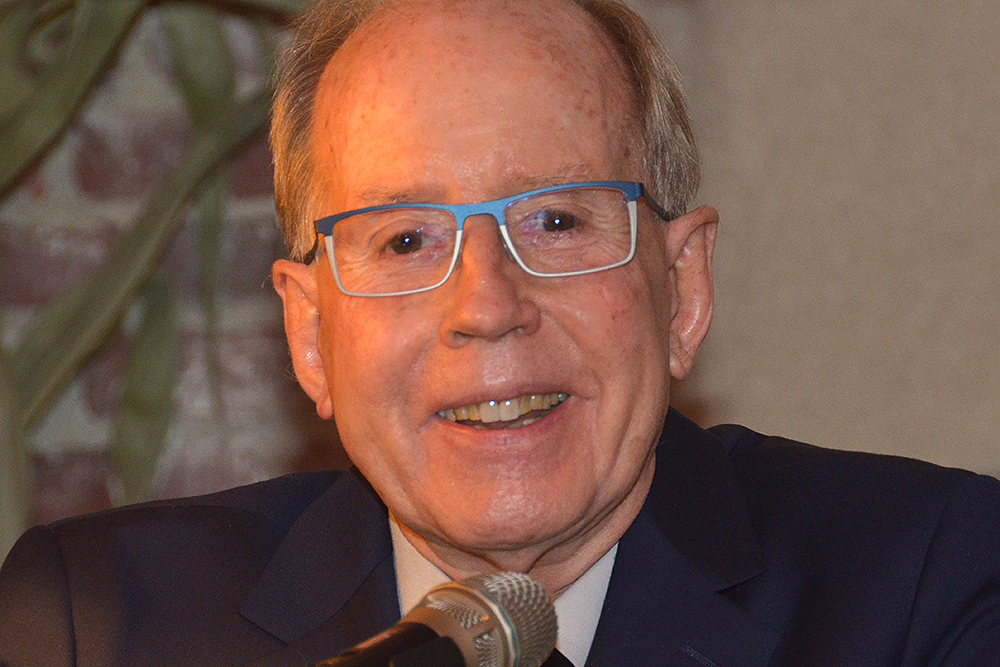Kaitlin Provencher | School of Science
2024-09-12 16:30:00
news.mit.edu

It was 1978, over a decade before the word “sustainable” would infiltrate environmental nomenclature, and Ronald Prinn, MIT professor of atmospheric science, had just founded the Advanced Global Atmospheric Gases Experiment (AGAGE). Today, AGAGE provides real-time measurements for well over 50 environmentally harmful trace gases, enabling us to determine emissions at the country level, a key element in verifying national adherence to the Montreal Protocol and the Paris Accord. This, Prinn says, started him thinking about doing science that informed decision making.
Much like global interest in sustainability, Prinn’s interest and involvement continued to grow into what would become three decades worth of achievements in sustainability science. The Center for Global Change Science (CGCS) and Joint Program on the Science and Policy Global Change, respectively founded and co-founded by Prinn, have recently joined forces to create the MIT School of Science’s new Center for Sustainability Science and Strategy (CS3), led by former CGCS postdoc turned MIT professor, Noelle Selin.
As he prepares to pass the torch, Prinn reflects on how far sustainability has come, and where it all began.
Q: Tell us about the motivation for the MIT centers you helped to found around sustainability.
A: In 1990 after I founded the Center for Global Change Science, I also co-founded the Joint Program on the Science and Policy Global Change with a very important partner, [Henry] “Jake” Jacoby. He’s now retired, but at that point he was a professor in the MIT Sloan School of Management. Together, we determined that in order to answer questions related to what we now call sustainability of human activities, you need to combine the natural and social sciences involved in these processes. Based on this, we decided to make a joint program between the CGCS and a center that he directed, the Center for Energy and Environmental Policy Research (CEEPR).
It was called the “joint program” and was joint for two reasons — not only were two centers joining, but two disciplines were joining. It was not about simply doing the same science. It was about bringing a team of people together that could tackle these coupled issues of environment, human development and economy. We were the first group in the world to fully integrate these elements together.
Q: What has been your most impactful contribution and what effect did it have on the greater public’s overall understanding?
A: Our biggest contribution is the development, and more importantly, the application of the Integrated Global System Modeling [IGSM] framework, looking at human development in both developing countries and developed countries that had a significant impact on the way people thought about climate issues. With IGSM, we were able to look at the interactions among human and natural components, studying the feedbacks and impacts that climate change had on human systems; like how it would alter agriculture and other land activities, how it would alter things we derive from the ocean, and so on.
Policies were being developed largely by economists or climate scientists working independently, and we started showing how the real answers and analysis required a coupling of all of these components. We showed, and I think convincingly, that what people used to study independently, must be coupled together, because the impacts of climate change and air pollution affected so many things.
To address the value of policy, despite the uncertainty in climate projections, we ran multiple runs of the IGSM with and without policy, with different choices for uncertain IGSM variables. For public communication, around 2005, we introduced our signature Greenhouse Gamble interactive visualization tools; these have been renewed over time as science and policies evolved.
Q: What can MIT provide now at this critical juncture in understanding climate change and its impact?
A: We need to further push the boundaries of integrated global system modeling to ensure full sustainability of human activity and all of its beneficial dimensions, which is the exciting focus that the CS3 is designed to address. We need to focus on sustainability as a central core element and use it to not just analyze existing policies but to propose new ones. Sustainability is not just climate or air pollution, it’s got to do with human impacts in general. Human health is central to sustainability, and equally important to equity. We need to expand the capability for credibly assessing what the impact policies have not just on developed countries, but on developing countries, taking into account that many places around the world are at artisanal levels of their economies. They cannot be blamed for anything that is changing climate and causing air pollution and other detrimental things that are currently going on. They need our help. That’s what sustainability is in its full dimensions.
Our capabilities are evolving toward a modeling system so detailed that we can find out detrimental things about policies even at local levels before investing in changing infrastructure. This is going to require collaboration among even more disciplines and creating a seamless connection between research and decision making; not just for policies enacted in the public sector, but also for decisions that are made in the private sector.
Support Techcratic
If you find value in Techcratic’s insights and articles, consider supporting us with Bitcoin. Your support helps me, as a solo operator, continue delivering high-quality content while managing all the technical aspects, from server maintenance to blog writing, future updates, and improvements. Support Innovation! Thank you.
Bitcoin Address:
bc1qlszw7elx2qahjwvaryh0tkgg8y68enw30gpvge
Please verify this address before sending funds.
Bitcoin QR Code
Simply scan the QR code below to support Techcratic.

Please read the Privacy and Security Disclaimer on how Techcratic handles your support.
Disclaimer: As an Amazon Associate, Techcratic may earn from qualifying purchases.




























![THYMESIA | 16 MINUTES OF GAMEPLAY | [1080P 60 FPS]](https://techcratic.com/wp-content/uploads/2025/09/1757557932_maxresdefault-360x180.jpg)



























































![Conquest of Space / I Married a Monster from Outer Space [Blu-ray]](https://techcratic.com/wp-content/uploads/2025/09/81Yx1UahVuL._SL1500_-360x180.jpg)









